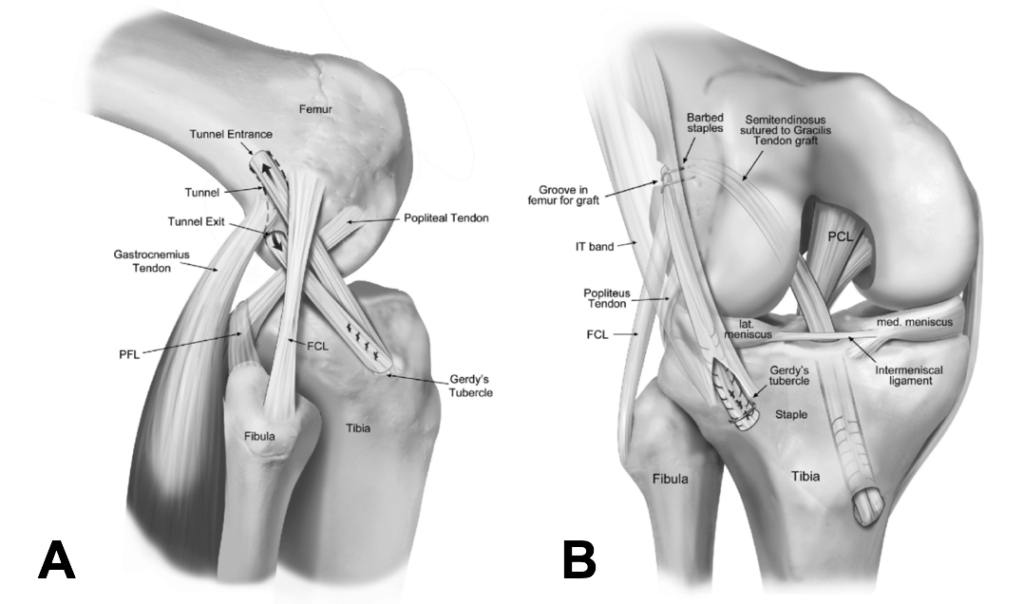ACL injuries are common among athletes as well as individuals who are active in sports. The ACL is a crucial ligament in the knee, which provides stability and helps support motions like pivoting hopping, and sudden shifts in direction. Unfortunately, due to its poor healing potential, ACL Reconstruction or surgery is often required to restore full knee function after a tear.

Image credit: jeremyburnhammd.com
Knowing the ACL reconstruction procedure, the role of an expert ACL surgeon and the advancements in surgical techniques will allow you make an informed decision on your treatment.
The Function of the ACL and the Reasons Reconstruction is often necessary
The ACL is the ligament that joins the bone of the femur with the tibia. It plays a vital role in stabilizing the knee while you move. The stability of the knee is significantly affected when the ACL is damaged, whether from a sudden turn making a landing that is awkward or high-impact sports. ACL tears can lead to discomfort and swelling. They can also make you feel like your knee “gives out” when you’re active.
ACLs have less self-healing capabilities than other ligaments. Therefore, surgery is the sole effective way to treat them. ACL surgery typically involves the repair of the ACL in the very rare case, or reconstrucing it with tendon-graft.
What is ACL Reconstruction Surgery
ACL reconstruction involves the replacement of a torn ACL ligament using a fresh graft. The graft can be taken from the body the patient or from a different donor. Two of the most frequently utilized grafts are the quadriceps tendon, and the patellar tendon (BTB). Each graft provides distinct advantages:
Quadriceps Tendon : This graft is known for its strength, and it has minimal complications with the donor site. It offers stability for athletes returning from high-impact sports.
Patellar Tendon (BTB): Sometimes referred to as the “gold standard” in ACL reconstruction this graft is the best for people who require maximum stability.
Dr. Burnham has extensive experience as a fellowship-trained ACL surgeon. He has done exhaustive research to identify the most effective graft choice to ensure knee stability and longevity. There are also minimal negative long-term side effects.
Advancements in ACL Reconstruction Techniques
ACL reconstructions have traditionally put the ACL transplant in a non-anatomic location, which means that it wasn’t aligned with the original ACL’s normal position. This could lead to inadequate results, like lower stability and a higher chance of re-injury. The advancements in imaging technology, surgical research and other factors have changed the way ACL reconstructions are done.
ACL surgeons, such as Dr. Burnham today, use modern techniques to position the new ACL exactly in the same position where the first ACL used to be. This is anatomically precise and is aligned with the knee’s natural mechanics. It enhances function and stability. Benefits of precision include:
Reduced risk of injury
Better long-term knee health
The risk of arthritis is reduced.
How to Measure Graft Size with Accuracy
ACL reconstruction’s success is contingent on the proper size of the ACL graft. With the help of MRI imaging and direct surgical observations, surgeons can adapt the graft to the individual’s anatomy. A graft that’s too small could not offer enough stability, and an oversized the graft could cause complications. ACL surgeons can customize the procedure to every patient in order to maximize the healing process and functionality.
Why Should You Choose an ACL Surgeon who has been trained by a fellowship?
The expertise of your surgeon is vital for the success of your ACL procedure. Fellow-trained ACL surgeons, like Dr. Burnham, have specialized knowledge and expertise in handling complex knee injuries. They’re equipped with modern surgical techniques and provide individualized treatment to each patient, resulting in better results.
Long-Term and Recovery Benefits
The majority of patients will slowly return to their previous levels of physical activity following ACL reconstruction, with proper rehabilitation. Physical therapy is a crucial component of rehabilitation. It helps strengthen the muscles surrounding them and help restore range of motion.
ACL surgery is improving the long-term outcomes of patients, with lower rates for injuries that are recurrences as well as better knee stability. Whether you’re an athlete eager to return to your sport or a person who is seeking to return an active lifestyle ACL reconstructive techniques can provide an opportunity to find relief that lasts.
Final Thoughts
ACL reconstruction is advancing due to the advancement of technology, research, and the expertise of specially trained ACL surgeons such as Dr. Burnham. Modern surgical techniques are focused on accuracy, precision, and customized care, giving patients the greatest chance for lasting and effective healing.
ACL injuries are a bit complicated however an ACL specialist can help understand your options and find the best option for you.